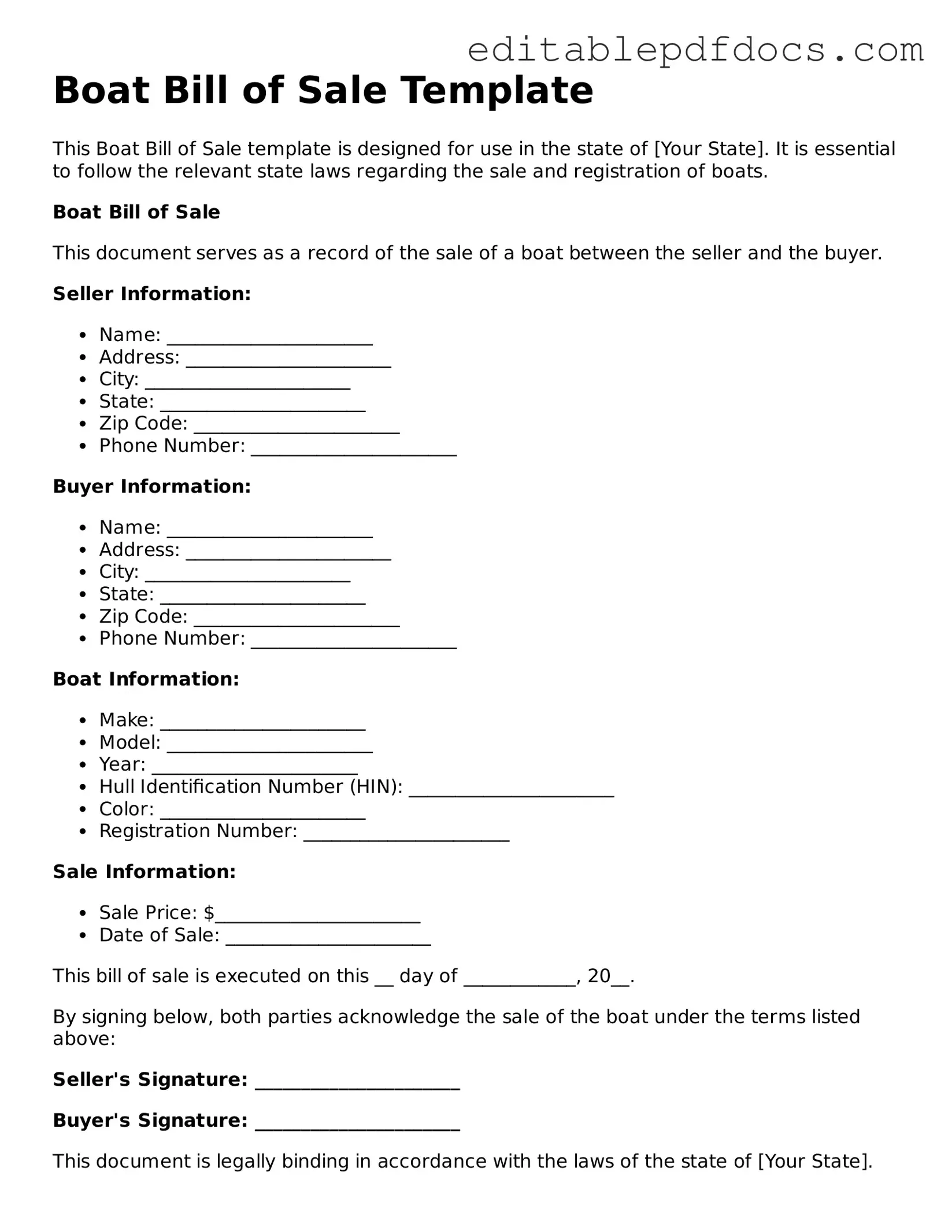When purchasing or selling a boat, having the right documentation is crucial to ensure a smooth transaction. The Boat Bill of Sale form serves as a vital record that outlines the details of the sale, protecting both the buyer and the seller. This document typically includes essential information such as the names and addresses of both parties, a description of the boat—including its make, model, year, and identification number—and the sale price. Additionally, the form may address any warranties or representations made by the seller regarding the condition of the boat. By providing a clear and concise summary of the transaction, the Boat Bill of Sale helps to prevent disputes and establishes legal ownership. It is important to complete this form accurately and retain a copy for future reference, as it may be required for registration or insurance purposes. Understanding the components of this form can streamline the buying or selling process, making it a key element for anyone involved in the boating community.
